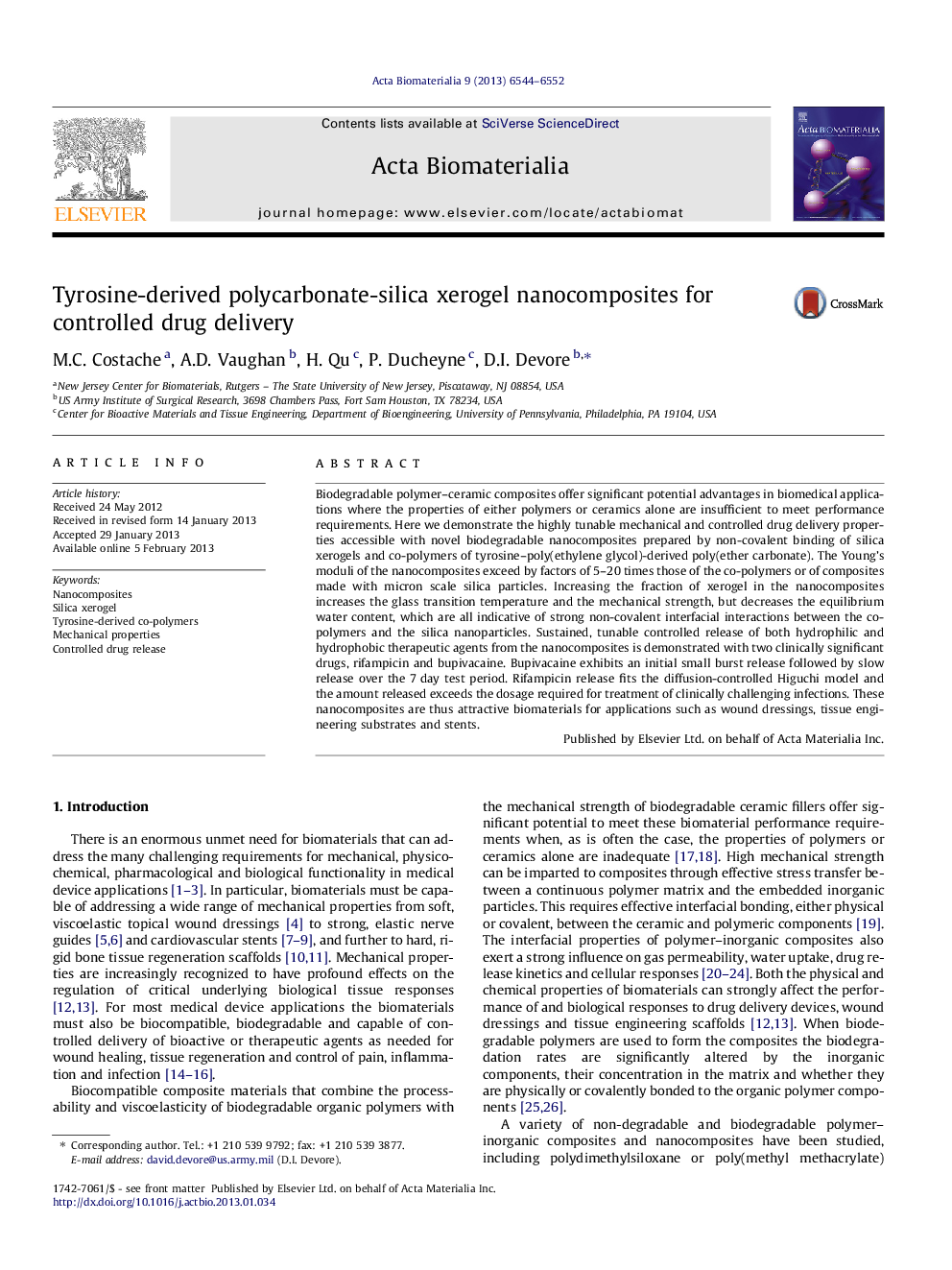| Article ID | Journal | Published Year | Pages | File Type |
|---|---|---|---|---|
| 10159926 | Acta Biomaterialia | 2013 | 9 Pages |
Abstract
Biodegradable polymer-ceramic composites offer significant potential advantages in biomedical applications where the properties of either polymers or ceramics alone are insufficient to meet performance requirements. Here we demonstrate the highly tunable mechanical and controlled drug delivery properties accessible with novel biodegradable nanocomposites prepared by non-covalent binding of silica xerogels and co-polymers of tyrosine-poly(ethylene glycol)-derived poly(ether carbonate). The Young's moduli of the nanocomposites exceed by factors of 5-20 times those of the co-polymers or of composites made with micron scale silica particles. Increasing the fraction of xerogel in the nanocomposites increases the glass transition temperature and the mechanical strength, but decreases the equilibrium water content, which are all indicative of strong non-covalent interfacial interactions between the co-polymers and the silica nanoparticles. Sustained, tunable controlled release of both hydrophilic and hydrophobic therapeutic agents from the nanocomposites is demonstrated with two clinically significant drugs, rifampicin and bupivacaine. Bupivacaine exhibits an initial small burst release followed by slow release over the 7Â day test period. Rifampicin release fits the diffusion-controlled Higuchi model and the amount released exceeds the dosage required for treatment of clinically challenging infections. These nanocomposites are thus attractive biomaterials for applications such as wound dressings, tissue engineering substrates and stents.
Related Topics
Physical Sciences and Engineering
Chemical Engineering
Bioengineering
Authors
M.C. Costache, A.D. Vaughan, H. Qu, P. Ducheyne, D.I. Devore,
